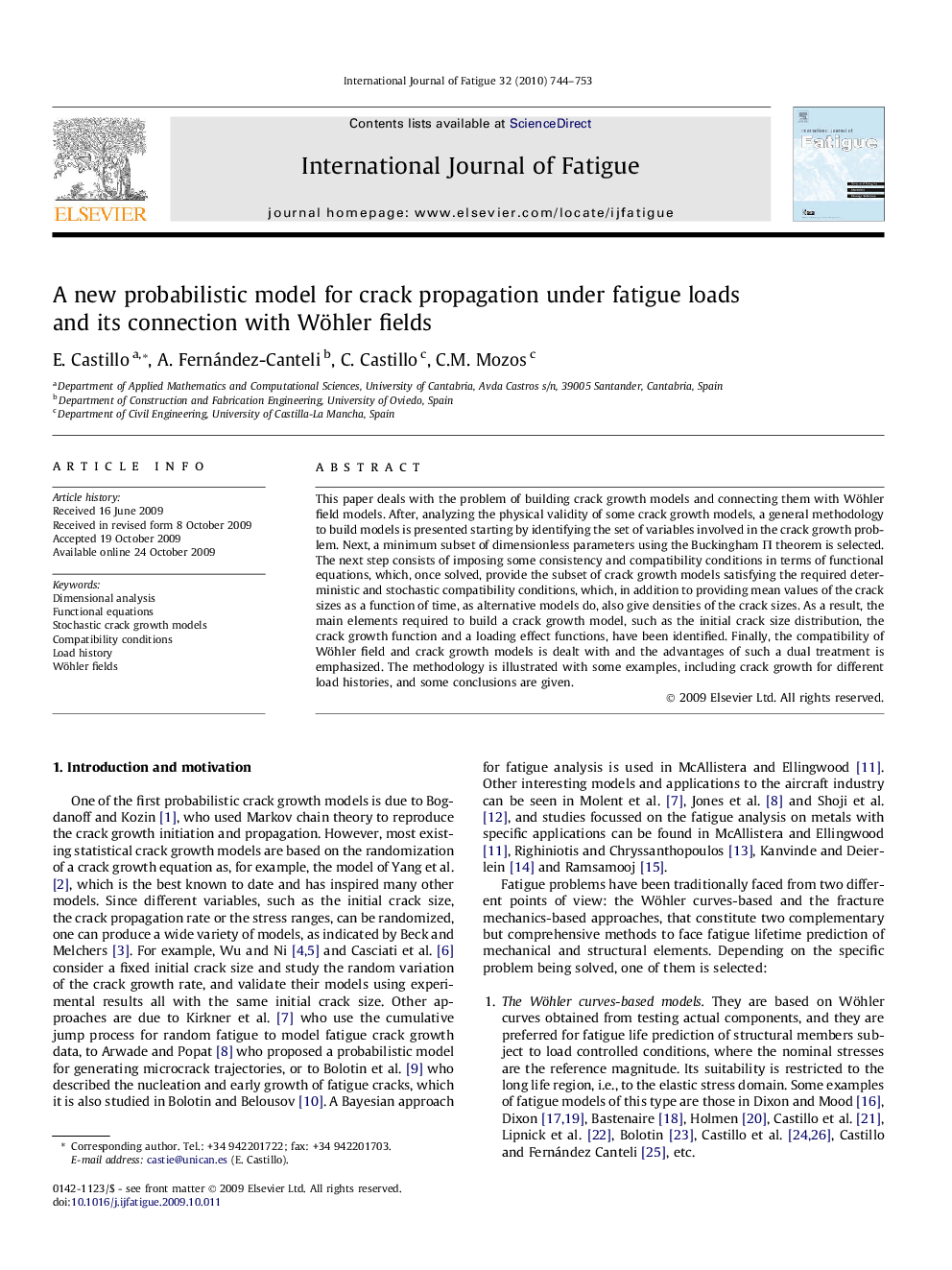| Article ID | Journal | Published Year | Pages | File Type |
|---|---|---|---|---|
| 777823 | International Journal of Fatigue | 2010 | 10 Pages |
This paper deals with the problem of building crack growth models and connecting them with Wöhler field models. After, analyzing the physical validity of some crack growth models, a general methodology to build models is presented starting by identifying the set of variables involved in the crack growth problem. Next, a minimum subset of dimensionless parameters using the Buckingham ΠΠ theorem is selected. The next step consists of imposing some consistency and compatibility conditions in terms of functional equations, which, once solved, provide the subset of crack growth models satisfying the required deterministic and stochastic compatibility conditions, which, in addition to providing mean values of the crack sizes as a function of time, as alternative models do, also give densities of the crack sizes. As a result, the main elements required to build a crack growth model, such as the initial crack size distribution, the crack growth function and a loading effect functions, have been identified. Finally, the compatibility of Wöhler field and crack growth models is dealt with and the advantages of such a dual treatment is emphasized. The methodology is illustrated with some examples, including crack growth for different load histories, and some conclusions are given.
